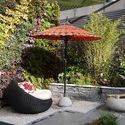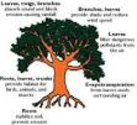-
About
- About Listly
- Community & Support
- Howto
- Chrome Extension
- Bookmarklet
- WordPress Plugin
- Listly Premium
- Privacy
- Terms
- DMCA Copyright
- © 2010-2025 Boomy Labs

 Armando Raish
Armando Raish
Listly by Armando Raish
Living Walls or Green Walls provide a number of benefits, both environmental and human. Here is a brief list about the main benefits of living walls.

By using a broad range of plants a green wall can considerably increase the number and variety of insects and birds in a given area, helping to return a more sustainable ecosystem in urban environments.

Urbanised areas have a higher average temperature than surrounding countryside. Increasing vegetation in city hot spots can cool the air and reduce reflected heat. Tests have shown temperature differences of up to 17⁰C between hard and vegetated surfaces in the same location. This heat reduction lowers the requirement for air conditioning and related power demands for a building.

During the day plants extract carbon dioxide, carbon monoxide and many other toxins from the air during photosynthesis, resulting in significant reductions in CO2 levels in well vegetated urban areas.

Increasing the coverage of vegetation can reduce the amount of storm water management required for a building. This is especially useful in older urban areas where excess storm water is combined with wastewater systems.

Vegetated surfaces can provide a visual impact and focus or be used to obscure unsightly structures and spaces.

Plants and greenery have been proven to provide uplifting and calming effects on people whilst having a positive impact on stress related illnesses. Studies have shown that simply having a view of greenery increases workplace productivity and patient recovery rates in hospitals.

Large areas of greenery help to suppress dust particles, improving air quality around construction sites and busy highways. This can lead to a reduction in respiratory illness. There has been much focus recently on reducing PM10 particles to meet EU regulations.

Planted surfaces have low reflectivity and high absorption properties. Ambient noise is attenuated so improving conditions for building occupants and pedestrians alike.

A coverage of vegetation over a building can dramatically reduce the need for additional cooling in summer. The vegetation also works as a blanket to reduce heat loss from a building in winter. Studies have shown considerable energy savings.

Green walls help reduce UV damage to surfaces and can protect a building from wind, weather and temperature fluctuations, prolonging the life of the structure. These factors may in fact offset any maintenance costs of green walling.

Green walls are visual indicators of sustainable design and can be a means of qualifying for additional eco-credits for sustainability assessment schemes and may help with planning applications.
